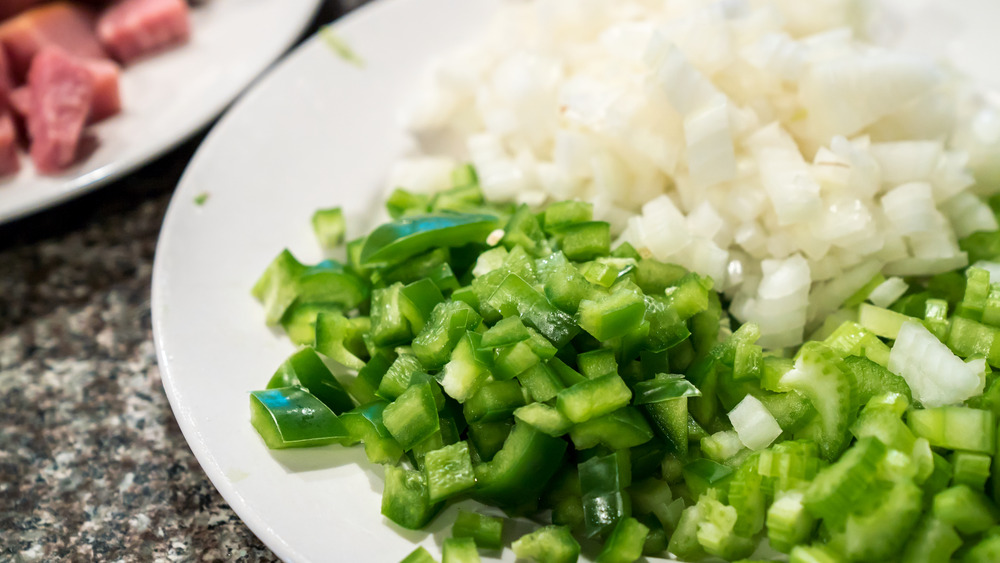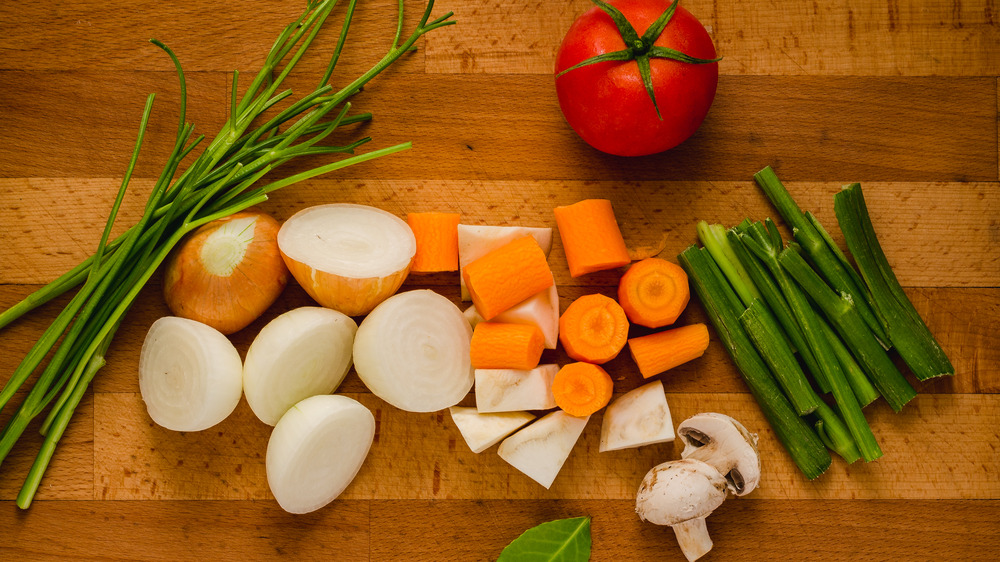The Real Difference Between Spain's Sofrito And The Cajun Holy Trinity
French cuisine is seen by many as the pinnacle of cooking. Quite a few chefs have spent some time in a French kitchen learning and absorbing all that there is to know about mastering the art of cooking. Today, folks around the world use several of France's basic cooking ingredients like crème fraîche, herbes de provence, and mirepoix (via MasterClass).
While crème fraîche and herbes de provence have stayed relatively the same over the years, mirepoix has enjoyed several culinary remixes. If you're in Germany, you'd probably be cooking with suppengrün, and if you're dining in Italy, you might be served up with some soffritto (via MasterClass). France's mirepoix has also inspired the Spanish to develop their own sofrito (which was later remixed in Latin America, per Culinary Journeys, LLC), while the American South (which has a heavy French influence) created what is called their Cajun Holy Trinity.
Where sofrito adds ingredients, the Cajun Holy Trinity swaps ingredients
Serious Eats details that, like many of Spain's dishes, the set ingredients for sofrito can differ from province to province and cook to cook. The publication notes that to make a delicious Spanish sofrito base, you'd need things like sweet onions, garlic, and tomato (an ingredient introduced after travels to the New World in the 16th century). Serious Eats notes that there are a few other honorable mentions, like bell peppers, leeks, carrots, and salt pork, that can be added to the mix as well. Due to all the New World colonies Spain had for centuries, you'll also find variations of sofrito in each of the Latin American countries as well, per Serious Eats. While Ecuador builds on the mirepoix base with cumin, Cuba's will mirror that of the Cajun Holy Trinity but with more punchy garlic.
So what's in the Cajun Holy Trinity? MasterClass notes that to make it, you'd follow the same guidelines for mirepoix, with the exception of the carrots. Serious Eats details that, unlike sofrito, the Cajun Holy Trinity doesn't have as many regional takes. Another difference between the two? The Cajun Holy Trinity oftentimes has a roux added to it. Once combined with the roux, this aromatic combination will serve as the base for dishes like gumbo and étouffée.

